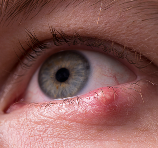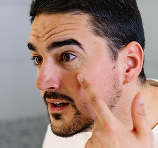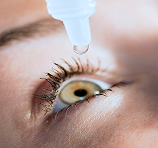


What Is a Stye?
A stye is an inflamed oil gland that forms along your upper or lower lash line or sometimes under your eyelid. Some people regularly develop styes while others rarely get them. Styes are a common condition that many people experience throughout their life and can usually be easily treated at home.
Eye Stye Symptoms
How do you know if you have a stye? Styes vary in size and appear as a red, swollen, and tender bump near the edge of the eyelid.
Eye styes are similar to pimples that appear on other parts of the body. A stye sometimes develops a white or yellow head on top of the bump. Depending on the size of the stye, the eye may become irritated and vision may be blurry or slightly impaired. In addition, styes often cause the eye to water.
Other stye symptoms include:
- Tenderness of the eyelid
- Burning, stinging, or itching
- A gritty, scratchy sensation in the eye
- Sensitivity to light
Is It a Stye or a Chalazion?
Some people confuse styes for another type of bump on the eye called a chalazions. Unlike styes, chalazions are mostly painless. Chalazions appear as small bumps in the eyelid that are caused by blocked oil glands. Similar to styes, chalazions can usually be treated with a warm compress. If left without treatment, some styes eventually turn into chalazions.
How to Get Rid of Styes
If you notice a sore spot or redness on your eyelashes without the appearance of a bump, a stye may be starting to develop. Use this as a warning sign and take action. Gently clean the area around your eyes and eyelids with Stye™ Eyelid Cleansing Wipes. The hypoallergenic, ophthalmologist-tested formula can help remove dirt, excess oil, pollen, and other debris that may be blocking or irritating the eye’s oil gland. Apply a warm compress to the area for 5-10 minutes 3-6 times a day to soothe irritation and help the stye heal faster
To see how to get rid of styes, read “Treatment Options for Styes.”
When Stye Symptoms Get Worse
If you are having serious problems with your vision and your stye isn’t healing on its own within a week or two, you should seek the help of a healthcare professional.
If your stye is swollen and sore looking like there is pus inside, do NOT try and drain it on your own. Consult with your doctor or other healthcare professional. Styes may burst as they heal and release fluid or shrink in size without draining as the immune system combats the infection.
The bacteria from one stye can sometimes spread and cause additional styes. This is why it’s important not to touch your eyes and to wash your hands before and after using cleansing wipes or applying ointment or a warm compress.
If you have multiple styes, if your entire eyelid is infected, or if you notice that irritation and swelling has moved beyond your eye and spread to other areas of your face, such as your cheek, it is best to visit a healthcare professional.
References





